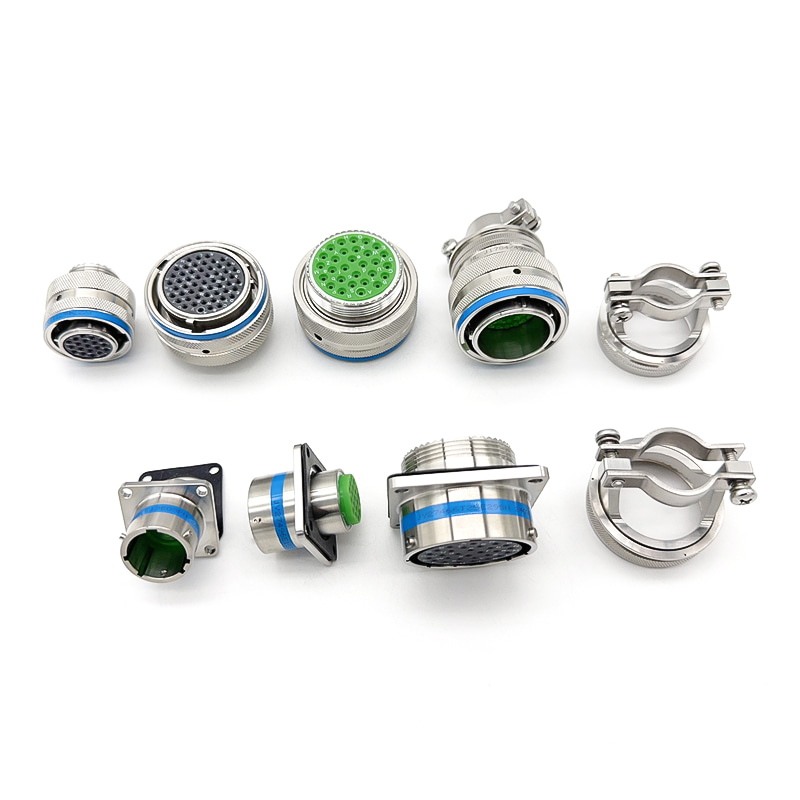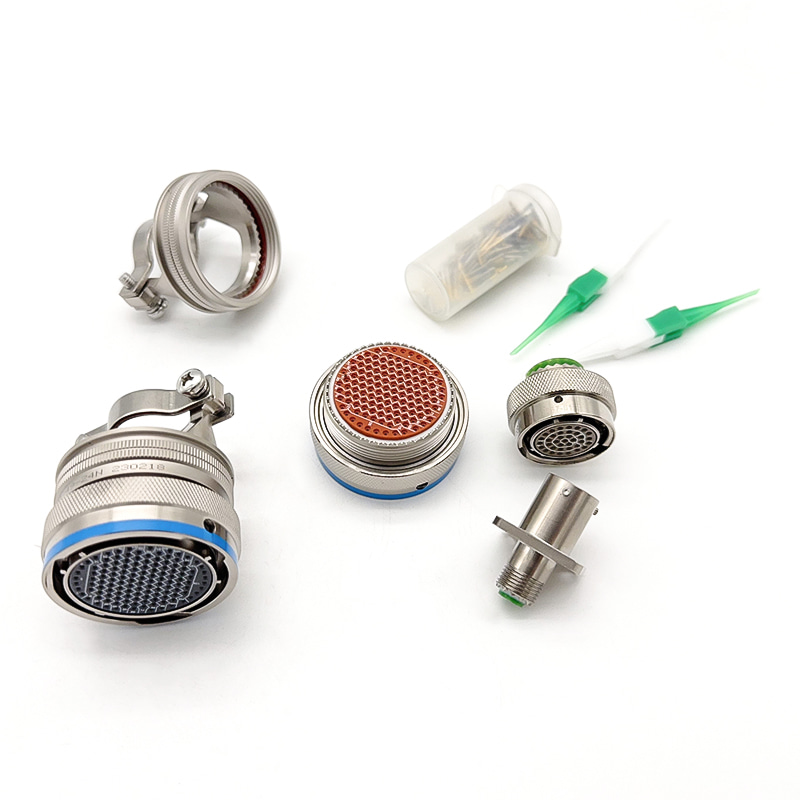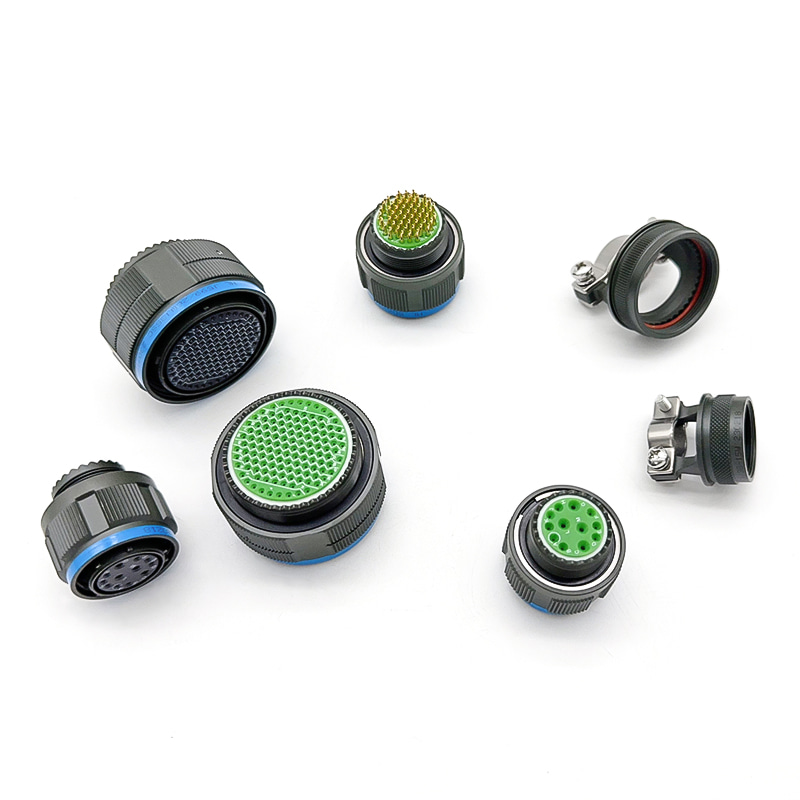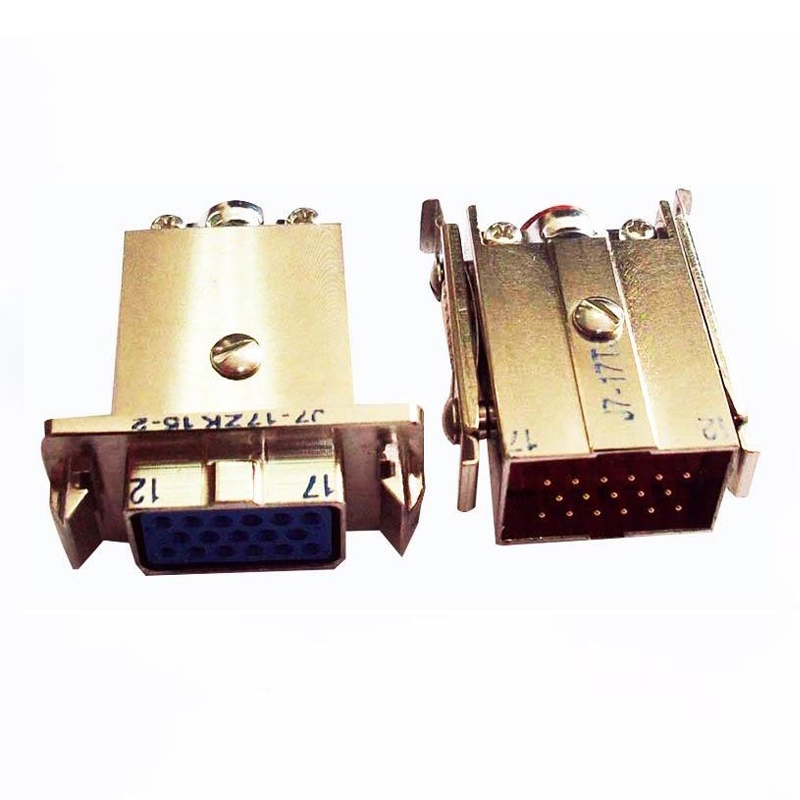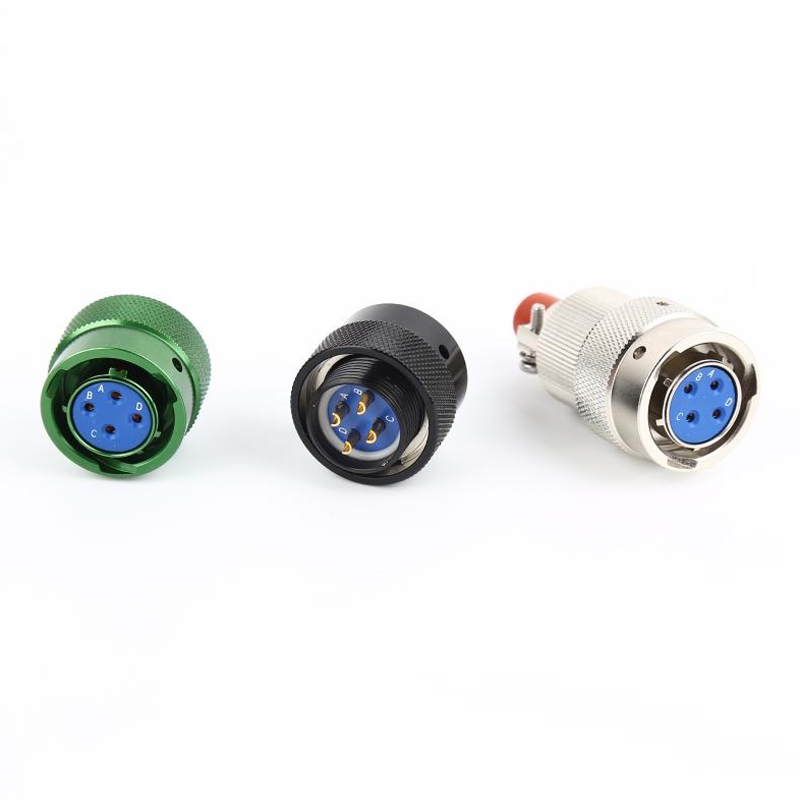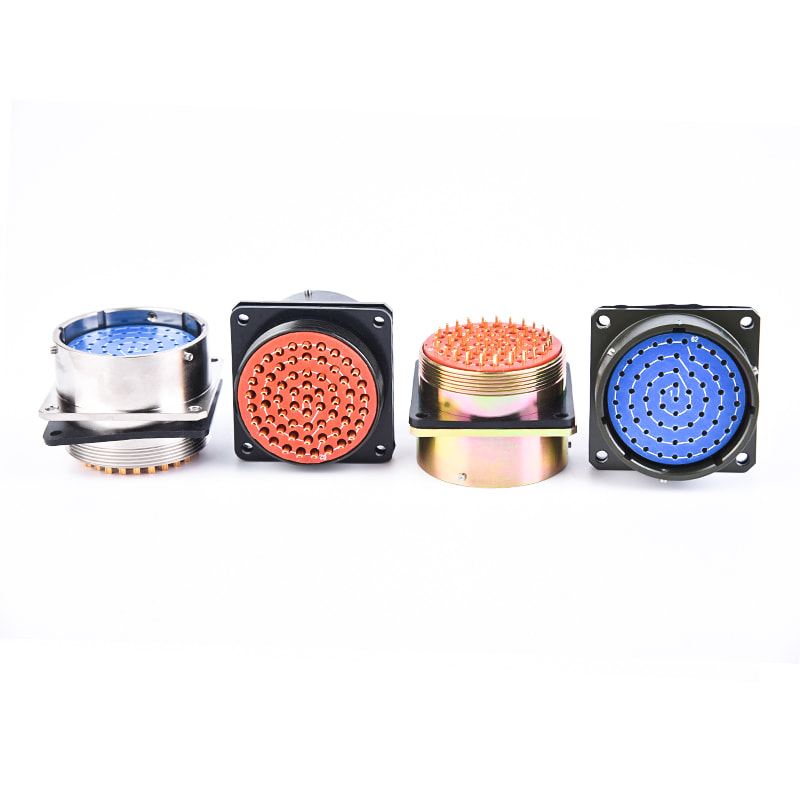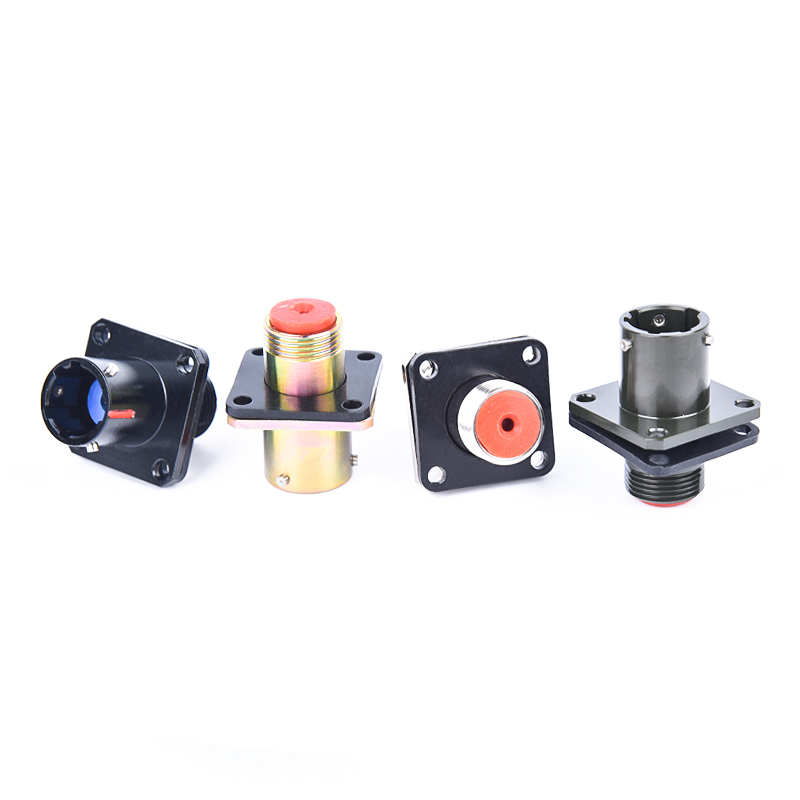- Home
- Products
- Solutions
- Quality
- Company
- Insight
- Contact
Web Menu
- Home
- Products
- Solutions
- Quality
- Company
- Insight
- Contact
Product Search
Exit Menu
Military Electrical Connectors: Reliability and Innovation in Critical Mission Applications
-
All News
Product
- - Military Electrical Connectors
- - Circular Electrical Connector
- - Rectangular Electrical Connector
- - Push Pull Self-Locking Connector
- - Russian Connectors
- - Cable Connectors
- - RJ45 and USB Electrical Connectors
- - Fiber Optic Electrical Connectors
- - Anti Water And Electricity Connectors
- - Circular Power Connector
Military Electrical Connectors: Reliability and Innovation in Critical Mission Applications
Military electrical connectors are the critical links in military equipment, ensuring the transmission of power, signals, and data. They are the "nerves" that enable the proper functioning of systems across aerospace, naval vessels, ground vehicles, and missile systems. The performance of these connectors directly impacts mission success and personnel safety.
The environments in which military connectors operate are uniquely demanding. They must withstand:
- Extreme temperatures: From polar cold to desert heat, requiring materials and designs that can handle severe temperature swings.
- Severe vibration and shock: Military equipment endures high-intensity vibration and impact during transport, operation, and combat.
- Moisture, salt spray, and corrosion: Naval and coastal operations demand robust sealing and corrosion resistance.
- Electromagnetic interference (EMI): Connectors must ensure signal integrity and prevent external EMI from affecting systems while also avoiding self-generated interference.
This article will explore the characteristics, main types, and future development trends of military electrical connectors, highlighting their pivotal role and innovative direction in modern military technology.
II. Characteristics and Requirements of Military Electrical Connectors
High-reliability connectors are essential for military applications, where a single point of failure can have catastrophic consequences. Their design and manufacturing are governed by stringent standards to ensure unwavering performance.
1. High Reliability and Stability
- Extremely Low Failure Rate: Military connectors must have an exceptionally low failure rate throughout their service life.
- Long-Term Stability: They must maintain performance for decades, adapting to long-term storage and rapid deployment without degradation.
2. Environmental Adaptability
- Resistance to Extreme Temperatures: Connectors are designed with special materials to function reliably in a wide operating range, typically -65°C to +200°C.
- Vibration and Shock Resistance: Robust mechanical structures and locking mechanisms prevent contact separation under severe vibration and shock.
- Waterproof, Dustproof, and Corrosion-Resistant: Many connectors feature high ingress protection (IP) ratings (e.g., IP67/IP68) to protect against water, dust, and corrosive agents. This is a critical feature, especially for waterproof aviation plugs and other ruggedized connectors.
- Pressure and Insulation Performance: Military connectors need to withstand high voltages and possess high insulation resistance to prevent short circuits and electrical shocks.
3. Electrical Performance
- Low Contact Resistance: Ensures efficient power and signal transmission, minimizing energy loss.
- EMC/EMI Shielding: Metal shells and grounding designs are used to shield signals from external interference and prevent the connector itself from emitting radiation.
- Signal Integrity: Crucial for maintaining the quality of high-speed data transmission.
4. Mechanical Performance
- Mating Cycles: Connectors must withstand a high number of mating and unmating cycles, often 500 or more, to accommodate frequent maintenance and testing.
- Locking Mechanisms: Secure locking methods like threaded, bayonet, or push-pull couplings ensure a solid connection.
5. Industry Standards and Certifications
- Military Specifications (MIL-SPEC): Connectors must conform to mandatory standards like MIL-DTL-38999 and MIL-DTL-5015, which dictate design, materials, and testing.
III. Main Types of Military Electrical Connectors
Based on their structure and application, military connectors fall into several key categories.
1. Circular Connectors
Circular connectors are the most common type in military applications due to their robust design and reliable performance. They are often used as heavy-duty industrial connectors. A specific example of a robust circular connector widely used in industrial and military applications is the M23 connector.
Features:
- Robust Metal Shell: Provides excellent protection against impact and vibration.
- High Contact Density: Compact design offers numerous electrical contacts in a small footprint.
- Secure Locking: Threaded or bayonet couplings ensure a reliable, vibration-resistant connection.
- Excellent Sealing: Often designed as waterproof aviation plugs to withstand harsh environments.
Applications:
- Aerospace and Aviation: On-board electronics, sensors, and control systems.
- Naval Vessels: Radar, navigation, and communication systems.
- Ground Vehicles: On-board electronics in tanks, armored vehicles, and trucks.
Parameter Comparison (Military Standard Series):
| Characteristic | MIL-DTL-38999 Series | MIL-DTL-5015 Series |
|---|---|---|
| Application | Harsh environments, high reliability | General-purpose, harsh environments |
| Sealing | High grade, up to IP67/IP68 | Good, generally below 38999 series |
| Operating Temperature | -65°C to +200°C | -55°C to +125°C |
| Coupling | Bayonet or threaded | Threaded |
| Contact Density | Very high density, miniaturized | Medium density |
| Shielding Performance | Excellent, 360° shielding | Good |
2. Rectangular Connectors
Rectangular connectors are often used in space-constrained applications requiring high-density connections.
Features:
- High Contact Density: Provides a large number of connections in a small area.
- Modular Design: Allows for flexible configurations of different modules (power, signal, fiber optic).
Applications:
- Rack and Panel Connections: Command centers, electronic warfare systems, and test equipment.
- Internal Electronics: Board-to-board connections within avionics systems.
3. RF/Coaxial Connectors
Designed for high-frequency signal transmission, these connectors ensure signal integrity and minimize loss.
Features:
- Impedance Matching: Ensures consistent impedance to reduce signal reflection.
- Low Insertion Loss: Maximizes the efficiency of high-frequency signal transmission.
- Excellent Shielding: Protects high-frequency signals from external EMI.
Applications:
- Radar Systems: Antenna connections.
- Military Communications: High-frequency radios and satellite systems.
4. Fiber Optic Connectors
Fiber optic connectors are increasingly important in military systems that require high bandwidth and immunity to EMI.
Features:
- High Bandwidth: Supports extremely high data transfer rates.
- Immunity to EMI: Optical signals are unaffected by electromagnetic interference.
- Low Signal Attenuation: Allows for long-distance transmission with high signal quality.
Applications:
- Modern military communication networks, high-resolution sensors, and data link systems.
IV. Innovations and Development Trends
The military connector industry is continually evolving to meet the demands of modern warfare. Taizhou Henglian Electric Co., Ltd. is a high-tech enterprise that embodies these trends. Founded in April 2011, the company is a qualified supplier to military and aerospace sectors, and has passed the GJB9001C-2017 quality management system certification. With over 150 employees and a technical center, the company's products cover military standards such as Y11, Y17, and J599, and are used in aerospace, marine, and other critical fields.
1. Miniaturization and Lightweighting
As military equipment like drones and portable communication devices shrink, so must their connectors.
Trend:
- Developing connectors with high-density contact designs and using lightweight, high-strength composite materials to reduce size and weight.
Taizhou Henglian Electric Co., Ltd.:
- The company's products are noted for their "high density" and "lightweight" characteristics, aligning perfectly with this industry trend.
2. High-Speed Data Transmission Capability
Modern military systems require faster data processing and transmission.
Trend:
- Integrating connectors that support high-speed protocols like Ethernet and PCIe, and incorporating fiber optic technology for high bandwidth and low latency.
Taizhou Henglian Electric Co., Ltd.:
- With products used in aerospace and marine applications, the company's technical center and modern inspection facilities enable them to develop and test connectors for these high-demand applications, ensuring signal integrity for future high-speed requirements.
3. Smart Integration and Intelligence
Future connectors will be more than just passive components.
Trend:
- Integrating sensors for monitoring connector health (temperature, vibration) and developing self-diagnostic capabilities to improve system reliability and maintenance.
Taizhou Henglian Electric Co., Ltd.:
- The company's ability to "develop and produce various kinds of special electrical connectors for various users to meet customer needs" indicates a capacity for bespoke solutions that could include integrated smart features. Their emphasis on "three-defense function, high density, [and] high reliability" further reinforces their foundation for building intelligent, robust products.
Military electrical connectors are the foundation of modern defense systems. Their reliability, environmental adaptability, and advanced performance are crucial for operational effectiveness. As military technology evolves, connectors will continue to adapt by becoming smaller, faster, smarter, and more integrated. Companies like Taizhou Henglian Electric Co., Ltd. are at the forefront of this innovation, leveraging their technical expertise and quality management to provide the robust, high-performance connectors necessary to meet the challenges of tomorrow's military landscape.

- Address : Jiangping South Road, Zhangqiao Industrial Park, Taixing City, Jiangsu Province, China
- Phone : +86 176 0151 5794
- Whatsapp : +86 176 0151 5794
- Email :[email protected]
- Email :[email protected]
- Home
- Products
- Solutions
- Quality
- Company
- Insight
- Contact
Copyright © Taizhou Henglian Electric Co., Ltd China Custom Electrical Connectors Manufacturers

 English
English русский
русский Español
Español 简体中文
简体中文